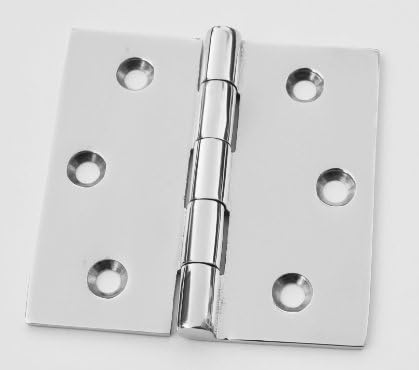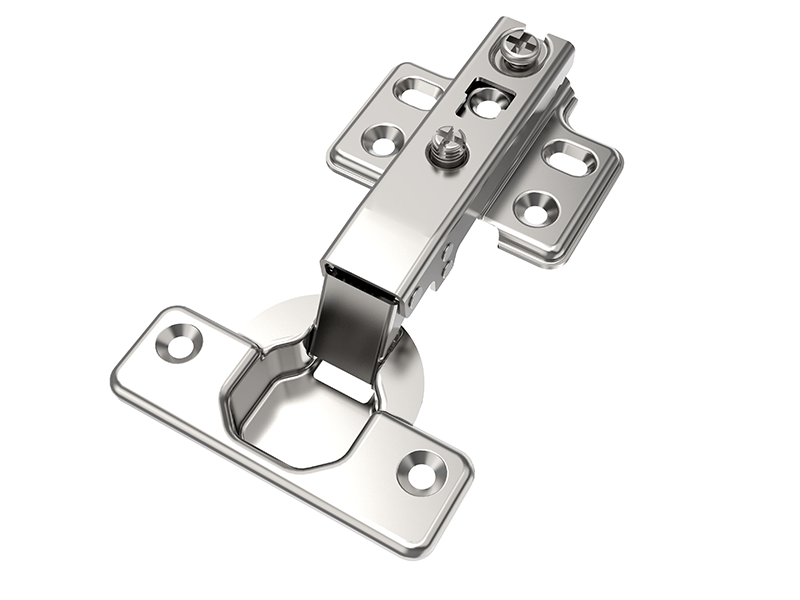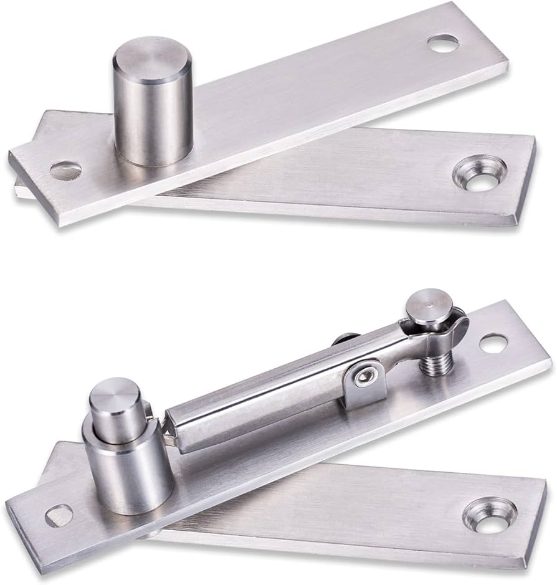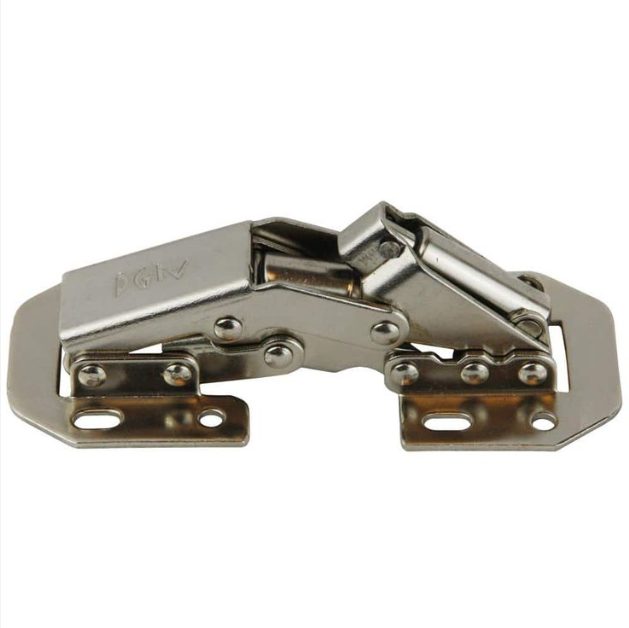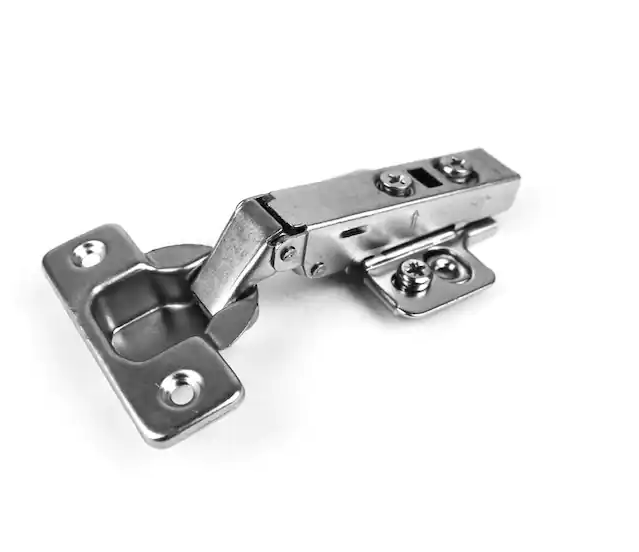When it comes to cabinet doors, the hinges may not be the first thing that comes to mind. However, the type of hinge you choose can greatly impact the functionality and appearance of your cabinets. In this article, we will explore the different types of cabinet door hinges and their uses, so you can make an informed decision for your next cabinet project.
Why Are Cabinet Door Hinges Important?
Cabinet door hinges are an essential component of any cabinet. They allow the door to open and close smoothly, while also providing support and stability. The right hinge can also enhance the overall look of your cabinets, adding a decorative touch or creating a seamless, modern appearance.
Types of Cabinet Door Hinges
There are several types of cabinet door hinges, each with its own unique features and uses. Let’s take a closer look at some of the most common types.
Butt Hinges
Cabinet doors commonly use butt hinges, which are the most basic type of hinge. They consist of two leaves joined by a pin, which allows the door to pivot open and closed. Typically, butt hinges are surface-mounted, meaning they are visible on the outside of the cabinet. They are available in a variety of sizes and finishes, making them a versatile option for any cabinet project.
Concealed Hinges
Concealed hinges, also known as European hinges, are a popular choice for modern cabinets. When the cabinet door is closed, they are hidden from view, creating a sleek and seamless appearance. Concealed hinges are adjustable, allowing for precise alignment and easy installation. They are also available in a variety of styles, including self-closing and soft-closing options.
Decorative Hinges
If you want to add a touch of style to your cabinets, decorative hinges are the way to go. These hinges come in a variety of designs, from ornate to simple, and can add a unique flair to your cabinets. Surface-mounted, decorative hinges are available in a range of finishes, making it easy to find the perfect match for your cabinet hardware.
Pivot Hinges
Pivot hinges are a popular choice for inset cabinet doors, where the door is flush with the cabinet frame. They consist of a single pivot point, allowing the door to swing open and closed. Pivot hinges are available in a range of sizes and finishes, making them a versatile option for any cabinet project.
Surface Mount Hinges
Surface mount hinges are a common choice for cabinets with face frame construction. They are mounted on the surface of the cabinet frame and remain visible when the door is closed. Surface mount hinges are available in a variety of sizes and finishes, making them a versatile option for any cabinet project.
Overlay Hinges
Overlay hinges are a popular choice for cabinets with overlay doors, where the door sits on top of the cabinet frame. They are available in both partial and full overlay options, depending on the amount of cabinet frame you want to be visible. Overlay hinges are typically surface-mounted and come in various sizes and finishes.
Choosing the Right Hinge for Your Cabinets
When choosing a hinge for your cabinets, there are a few factors to consider. These include the type of cabinet door, the style of your cabinets, and the desired functionality.
Type of Cabinet Door
The type of cabinet door you have will determine the type of hinge you need. For example, if you have an inset door, you will need a pivot hinge, while a surface mount hinge is suitable for a face frame cabinet.
Style of Cabinets
The style of your cabinets can also influence the type of hinge you choose. For a modern, seamless look, concealed hinges are a popular choice. For a more traditional or decorative style, butt hinges or decorative hinges may be a better fit.
Functionality
Consider the desired functionality of your cabinet doors when selecting a hinge. For example, if you want your cabinet doors to close softly and quietly, a soft-closing hinge is a good option. If you want your doors to stay open without the need for a door stop, a self-closing hinge is a better choice.
Installing Cabinet Door Hinges
Installing cabinet door hinges is a straightforward process, but it’s crucial to ensure correct installation for optimal functionality. Here are the basic steps for installing cabinet door hinges:
- Measure and mark the placement of the hinges on the cabinet frame and door.
- Use a drill to create pilot holes for the screws.
- Attach the hinges to the cabinet frame and door using the screws provided.
- Adjust the hinges as needed for proper alignment and functionality.
It is always a good idea to double-check the alignment and functionality of the hinges before installing them on all of your cabinet doors.
Maintaining Your Cabinet Door Hinges
To ensure your cabinet door hinges continue to function properly, it is important to maintain them regularly. This includes:
- Cleaning the hinges with a mild soap and water solution.
- Tightening any loose screws.
- Lubricating the hinges with a silicone-based lubricant.
- By taking these simple steps, you can extend the lifespan of your cabinet door hinges and keep them functioning smoothly.
In Conclusion
Cabinet door hinges may seem like a small detail, but they play a crucial role in the functionality and appearance of your cabinets. Understanding the various types of hinges and their uses allows you to choose the appropriate hinge for your cabinets and ensure proper installation and maintenance.Whether you want a modern, seamless look or a decorative touch, there is a hinge that will meet your needs and enhance the overall look of your cabinets.

